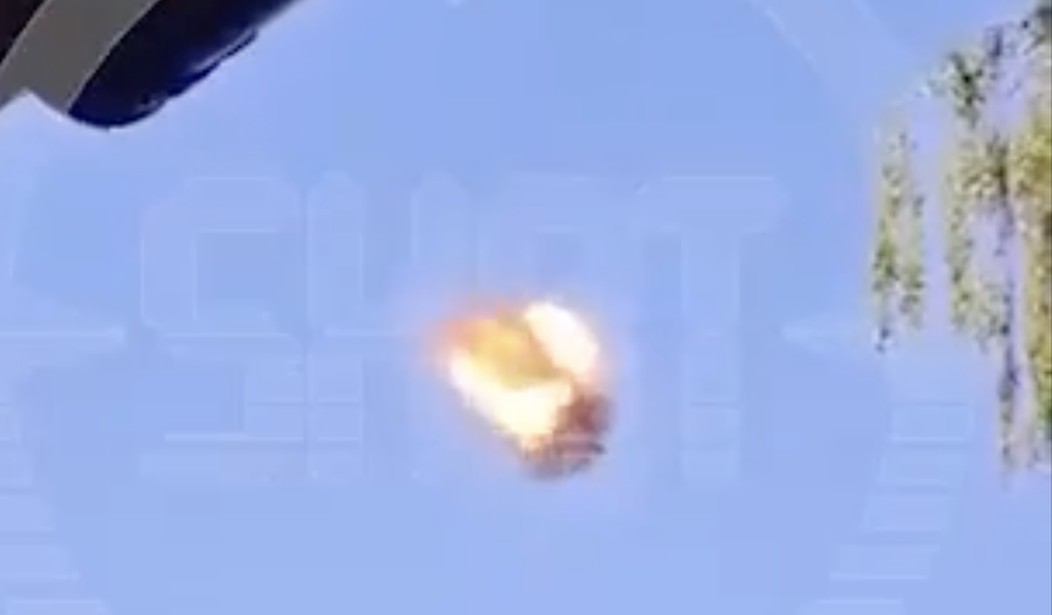There's more than one reason that the frontlines in Ukraine are mostly frozen into place like the trenches of the Western Front in the Great War, but perhaps the most stubborn is the fact that neither side controls the air. Neither side is likely to, either, in the foreseeable future.
Yet both Russia and Ukraine have plenty of drones, and weren't they supposed to be the future of airpower?
Yes and no.
This is the second in a multi-part series on lessons from the Russo-Ukraine War. How many parts? Ask me again when it's over.
There are actually two issues here, depending on how high in the sky you want to look.
The first — the high-altitude problem — is just how frighteningly good modern air defenses are.
Russia's Su-34 attack jet — roughly on par with the vaunted F-15E Strike Eagle — is fast, nimble, long-ranged, and capable of putting a variety of smart munitions on target. With about 150 of them in service at the start of the Ukraine War two years ago, Russia should have had the ability to decisively concentrate air attacks at the point of decision on any battlefield anywhere in Ukraine.
Yet it never happened anywhere in Ukraine.
One reason (not germane but worth mentioning) was Russia's "incompetent air campaigning and execution." For whatever reason, Russia's air force lacked the training and doctrine to conduct complex air operations, even against an enemy with a much smaller, less well-equipped, and less well-trained air force.
The other reason — and the focus of today's column — is Ukraine's air defenses. From short-range missiles that a single soldier can carry to multibillion-dollar Patriot air defense batteries, it's never been more true that "what you can see you can hit, and what you can hit you can kill."
I've been reminding Longtime Sharp VodkaPundit Readers™ for probably 20 years now that stealth is the price of admission to the modern battlespace. And for those who didn't believe me back then, now would be a good time to start.
Lacking any stealth fighters (aside from a few test models of the long-delayed Su-57 Felon), Russian jets can't get near any battlefield, much less concentrate their power on one. Between that and a shortage of smart munitions, even Russia's best strike jets like the Su-34 have been reduced to lobbing dumb bombs at distant targets.
Far from being the lethal, modern air force it looked like on paper before Feb. 24, 2022, the VVS is little more than a guy throwing hand grenades in the dark.
Then there's the low-altitude problem.
All this talk about $100-million stealth jets doesn't mean that drones aren't useful because, damn, are they ever. We just got a deadly reminder of that on Sunday, when an Iranian proxy-controlled drone slipped in behind one of ours while landing at Tower 22 in Jordan before doing a kamikaze attack on a sleeping quarter. Three were killed and another 36 wounded.
While drones aren't decisive — at least not yet — they are a deadly complication that can be used by everyone from major nation-states like Russia and Ukraine to ragtag terrorist groups anywhere they care to set up shop.
So the question isn't whether we should rely more on stealth jets or drones because the answer is both. American/Western air power owns the skies over 2,000 feet, thanks in large part to the deadly combination of F-22 Raptor air superiority fighters and F-35 Lightning II multirole jets.
But below 2,000 feet is where small, lightweight, inexpensive drones rule the skies — and that's where we are weak. Probably in no small part because they're small, lightweight, inexpensive, and wouldn't look particularly sexy in a Lockheed sales brochure. "Conventional air supremacy does little good against the capabilities of modified off-the-shelf drones," War on the Rocks reported in 2018, "which now contest airspace under 2,000 feet." The Ukraine War has proven that assessment correct.
After almost two years of war, neither Russia nor Ukraine has figured out how to shut down the other side's drones. Neither have we, and that's the most disturbing lesson we've learned about the air war over Ukraine.
Recommended: LESSONS FROM UKRAINE: Quantity Still Has a Quality All Its Own.









